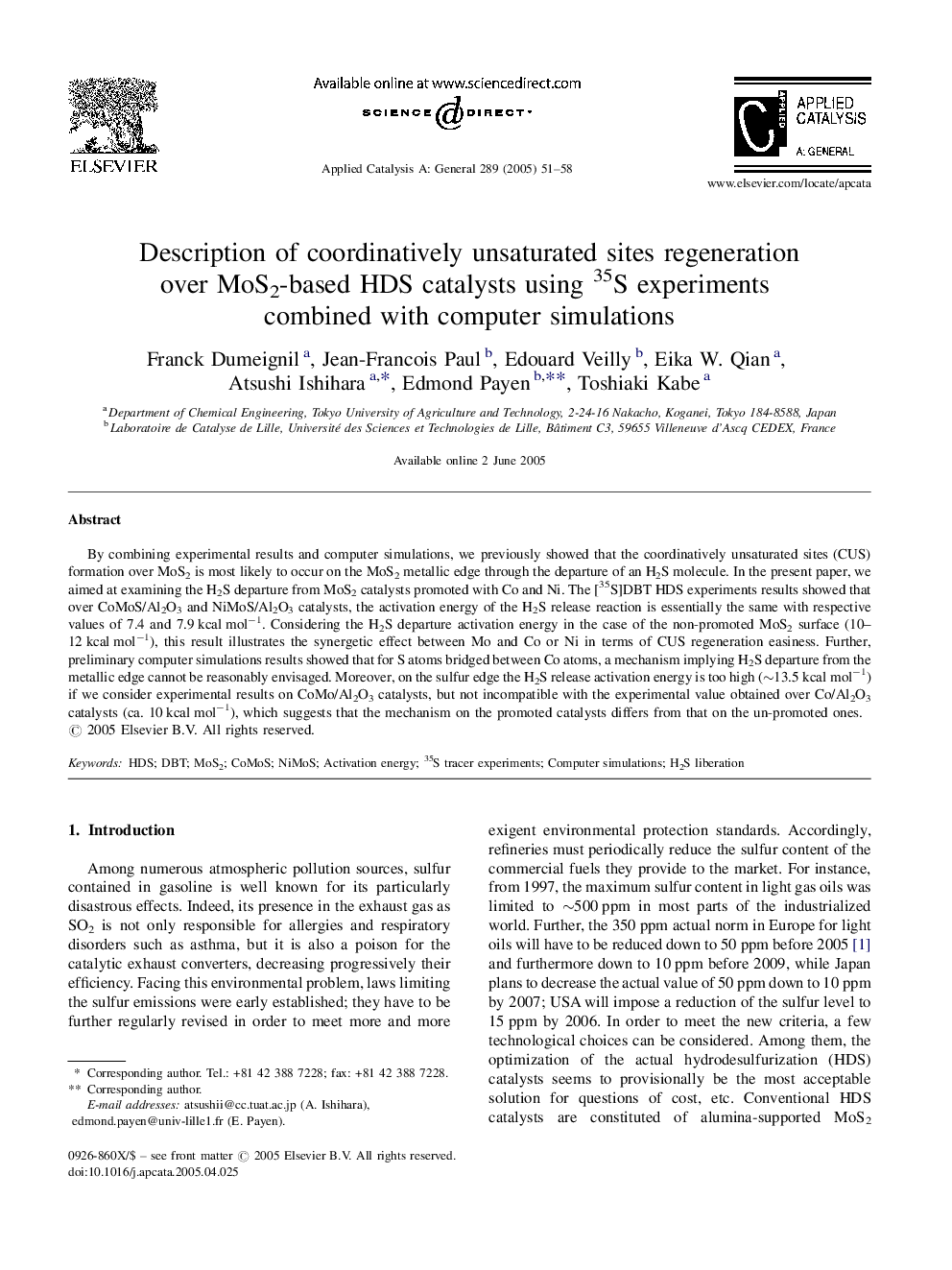| Article ID | Journal | Published Year | Pages | File Type |
|---|---|---|---|---|
| 10239150 | Applied Catalysis A: General | 2005 | 8 Pages |
Abstract
By combining experimental results and computer simulations, we previously showed that the coordinatively unsaturated sites (CUS) formation over MoS2 is most likely to occur on the MoS2 metallic edge through the departure of an H2S molecule. In the present paper, we aimed at examining the H2S departure from MoS2 catalysts promoted with Co and Ni. The [35S]DBT HDS experiments results showed that over CoMoS/Al2O3 and NiMoS/Al2O3 catalysts, the activation energy of the H2S release reaction is essentially the same with respective values of 7.4 and 7.9 kcal molâ1. Considering the H2S departure activation energy in the case of the non-promoted MoS2 surface (10-12 kcal molâ1), this result illustrates the synergetic effect between Mo and Co or Ni in terms of CUS regeneration easiness. Further, preliminary computer simulations results showed that for S atoms bridged between Co atoms, a mechanism implying H2S departure from the metallic edge cannot be reasonably envisaged. Moreover, on the sulfur edge the H2S release activation energy is too high (â¼13.5 kcal molâ1) if we consider experimental results on CoMo/Al2O3 catalysts, but not incompatible with the experimental value obtained over Co/Al2O3 catalysts (ca. 10 kcal molâ1), which suggests that the mechanism on the promoted catalysts differs from that on the un-promoted ones.
Related Topics
Physical Sciences and Engineering
Chemical Engineering
Catalysis
Authors
Franck Dumeignil, Jean-Francois Paul, Edouard Veilly, Eika W. Qian, Atsushi Ishihara, Edmond Payen, Toshiaki Kabe,
